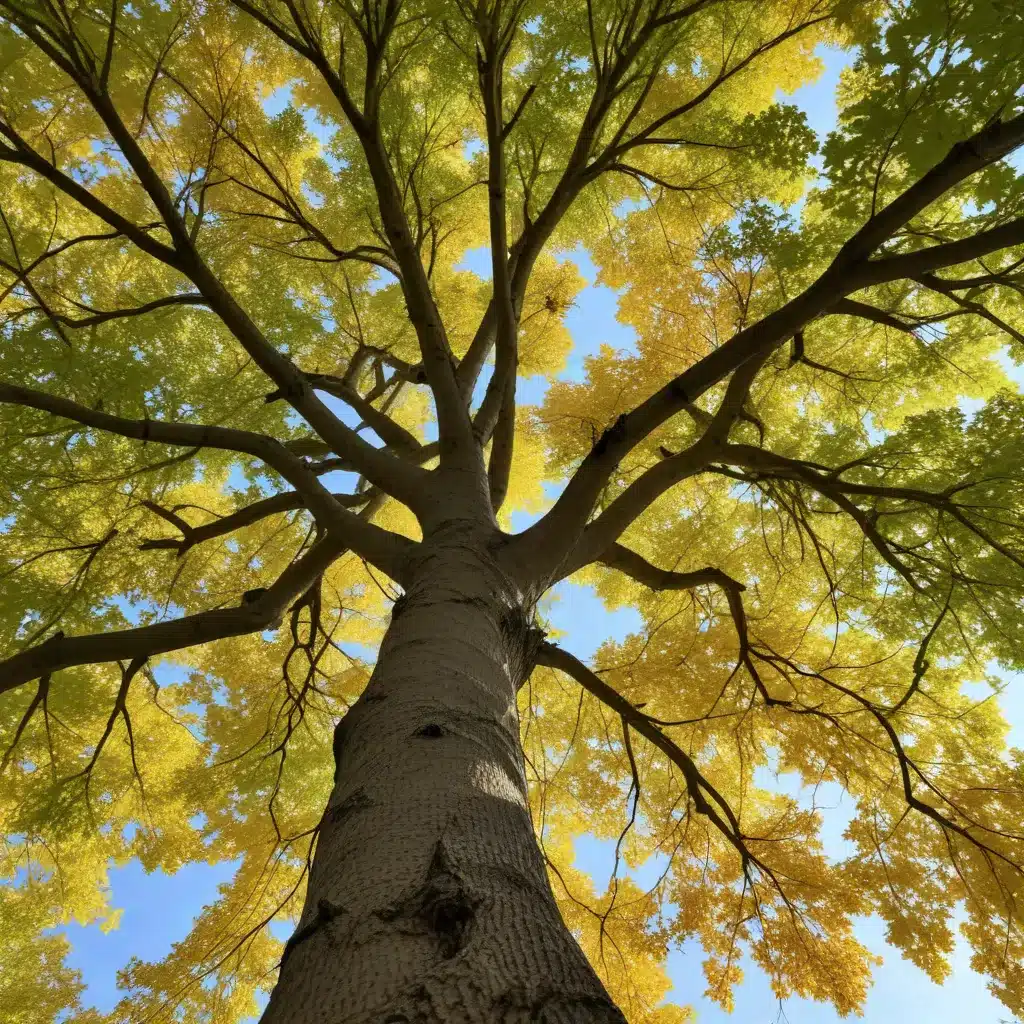
As a tree care specialist at TriCounty Tree Care, I’ve dedicated my career to helping homeowners and businesses cultivate resilient, thriving trees. In this comprehensive guide, I’ll share advanced insights into managing the unique seasonal demands faced by trees, empowering you to nurture your landscape’s natural assets.
Seasonal Factors Affecting Trees
Spring Considerations
As winter’s chill subsides, trees awaken from dormancy and initiate the vital processes of bud break, leaf emergence, and root growth. Monitoring soil temperatures is key, as root activity accelerates once the soil warms above 50°F (10°C). Ensure adequate soil moisture during this period to support these renewed physiological functions.
Summer Adaptations
Prolonged heat and drought can stress trees, triggering defensive mechanisms like stomatal closure and leaf abscission. Maintain vigilance, regularly inspecting for signs of water stress, such as wilting foliage or dieback. Strategically applying deep, infrequent watering encourages robust root systems that can better withstand seasonal aridity.
Autumn Preparations
As daylight hours diminish, trees shift their focus to lignification – the hardening of cell walls in preparation for winter dormancy. Pruning at this time minimizes sap loss and promotes proper wound healing. Assess nutrient reserves and consider targeted fertilization to bolster the tree’s resilience against frost and other winter hazards.
Cultivation Strategies
Soil Management
Healthy, well-structured soil is the foundation for vibrant trees. Conduct regular soil tests to monitor pH, nutrient levels, and the presence of beneficial microorganisms. Incorporate organic matter, such as compost or aged bark, to enhance water-holding capacity and nutrient cycling. Aerate compacted soils to facilitate root respiration and water infiltration.
Pruning Techniques
Judicious pruning is essential for tree health and structure. During the dormant season, focus on thinning out crowded branches, removing crossing or rubbing limbs, and eliminating dead or damaged wood. Summer pruning, or pinching, can stimulate earlier fruit production and improved crop quality. Maintain a keen eye for water sprouts and suckers, removing them promptly to redirect the tree’s energy.
Pest and Disease Control
Trees are susceptible to a range of pests and pathogens, from scale insects and aphids to fungal cankers and bacterial leaf scorch. Adopt an integrated pest management (IPM) approach, favoring biological controls and cultural practices over broad-spectrum pesticides whenever possible. Regularly inspect for early signs of infestations or disease, and take swift, targeted action to mitigate the threat.
Environmental Stressors
Climate Variability
As global temperatures rise and precipitation patterns shift, trees must adapt to increasingly unpredictable environmental conditions. Drought-tolerant species and climate-adapted cultivars can be invaluable in navigating these challenges. Employ water conservation strategies, such as mulching and xeriscaping, to bolster trees’ resilience.
Urban Challenges
The built environment poses unique obstacles for trees, including soil compaction, limited root space, and air pollution. Incorporate structural soil cells and suspended pavement systems to provide ample room for healthy root development. Strategically selecting urban-tolerant trees can also enhance their ability to thrive in these demanding conditions.
Extreme Weather Events
Powerful storms, prolonged freezes, and other extreme weather events can inflict severe damage on trees. Prioritize proactive risk assessment and preventative maintenance, such as regular inspections, crown thinning, and lightning protection. Develop a rapid-response plan to swiftly address any post-event issues, ensuring the safety of your landscape.
Holistic Tree Care
Integrated Ecosystem Approach
Trees do not exist in isolation; they are integral components of complex, dynamic ecosystems. By adopting a holistic, systems-based perspective, you can cultivate synergistic relationships between trees and other flora and fauna. Promote biodiversity, encourage beneficial insects, and leverage natural pest control mechanisms to create a self-sustaining, resilient landscape.
Long-term Tree Health
Nurturing trees is a long-term investment that requires a commitment to ongoing care and monitoring. Establish a comprehensive maintenance schedule, addressing seasonal needs and anticipating potential challenges. Maintain detailed records to track the growth, condition, and treatment history of each tree, enabling you to make informed, proactive decisions.
Community Engagement
Trees are a shared resource that contribute to the overall health and well-being of a community. Collaborate with local arborists, landscape designers, and municipal authorities to develop coordinated strategies for tree preservation and expansion. Engage residents through educational outreach, fostering a sense of collective stewardship and environmental responsibility.
Thriving Tree Ecosystems
Biodiversity Enhancement
Diversifying your tree selection is a powerful strategy for promoting ecological resilience. Incorporate a mix of native species and climate-adapted cultivars to create a layered, structurally complex canopy. This approach not only enhances visual interest but also supports a richer array of wildlife habitats and ecosystem services.
Climate Change Mitigation
Trees are remarkable allies in the fight against climate change, serving as natural carbon sinks that sequester atmospheric carbon dioxide. Strategically expand your urban forest to maximize carbon capture and urban cooling. Complement these efforts with regenerative landscaping practices that minimize waste and foster circular resource use.
Sustainable Practices
Adopt a regenerative mindset that views your landscape as a living, dynamic system. Employ techniques like composting, mulching, and water harvesting to minimize resource inputs and close nutrient loops. This holistic approach not only benefits your trees but also contributes to the overall environmental sustainability of your property.
By embracing these advanced seasonal strategies and cultivation techniques, you can cultivate a resilient, thriving landscape that delivers lasting benefits to your community and the environment. For more information on TriCounty Tree Care’s comprehensive tree care services, please visit www.tricountytreecare.com.


